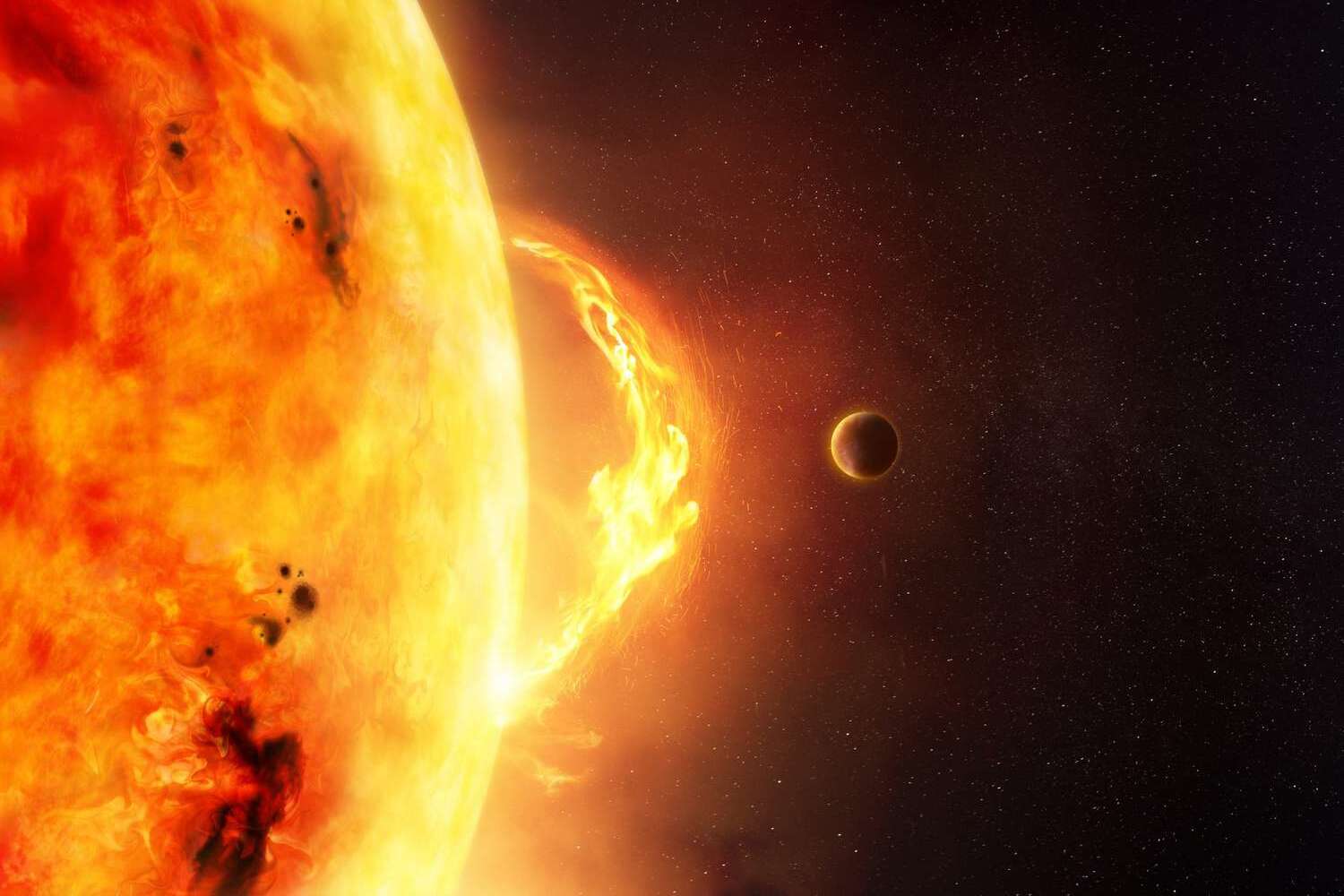Solar flares are among the most powerful phenomena in our Solar System, directly impacting Earth and its technologies. They occur in the Sun’s atmosphere, releasing enormous amounts of energy in a very short time. Although solar flares happen far from our planet, their effects are felt on Earth, influencing radio communications, satellites, and even human health. This article presents fascinating and captivating facts about solar flares that you may not have known but that will help you better understand this extraordinary cosmic event.
- A solar flare is a sudden and intense release of energy in the Sun’s corona, accompanied by bright light and electromagnetic radiation across a range of wavelengths. Flares can last from a few minutes to several hours, with the most intense occurring in mere seconds.
- The energy released during a solar flare can be thousands of times greater than the total energy consumed by humanity in one year. This energy spreads in the form of X-rays, ultraviolet light, radio waves, and high-energy particles. Solar flares often coincide with coronal mass ejections, massive clouds of plasma expelled into space.
- Solar flares originate in regions of the Sun with very strong magnetic fields known as active regions. These areas are often associated with sunspots, where magnetic field lines twist and store energy until it is suddenly released as a flare.
- Flares are classified by their intensity into classes A, B, C, M, and X, with X being the most powerful. X-class flares can trigger severe geomagnetic storms on Earth and disrupt satellite operations and communications. The strongest flares recorded in history have astonished scientists with their scale.
- Solar flares affect Earth’s magnetic field, causing geomagnetic storms that can produce northern and southern lights at high latitudes. These natural light displays are visible as stunning shows in the night sky. However, intense geomagnetic storms can also damage power grids and navigation systems.
- Solar flares disrupt radio communications, especially shortwave transmissions, affecting aviation, maritime, and military operations. They can also cause GPS malfunctions, which is critical for both civilian and military users. The severity of these effects depends on the flare’s strength and its orientation toward Earth.
- Particles ejected during solar flares can reach Earth within hours, creating radiation belts and increasing radiation levels in orbit. This poses dangers to astronauts and spacecraft, which can suffer damage. For this reason, space agencies closely monitor solar activity.
- Solar flares were first observed telescopically in the 19th century. Since then, their study has become a key part of space science. Modern satellites and telescopes enable real-time tracking of flares and prediction of their effects.
- Solar flares follow the approximately 11-year solar activity cycle, during which their frequency rises and falls. The maximum phase of this cycle features the highest number of flares and associated geomagnetic storms. Understanding this cycle helps scientists forecast space weather.
- Solar flares can also impact human health, particularly in individuals with cardiovascular conditions. Increased radiation and magnetic disturbances may exacerbate chronic illnesses. However, for the general population, these effects are minimal.
- Powerful solar flares can cause electrical grid failures, leading to widespread blackouts. There have been historical events where geomagnetic storms paralyzed entire regions. This underscores the need to protect infrastructure from space weather hazards.
- Solar flares contribute to the formation of Earth’s radiation belts, which affect satellites and spacecraft. Radiation in these belts can damage electronics and pose risks to astronauts. Studying these phenomena aids in developing protective technologies.
- Solar flares and related phenomena provide scientists with valuable information about the Sun’s magnetic field and internal structure. This improves understanding of processes occurring in stars similar to the Sun. Such knowledge is crucial for astrophysics and space weather forecasting.
- Solar flares are part of a larger complex of solar activity, including prominences and coronal mass ejections, which together shape space weather. The interaction of these processes determines the nature of space weather conditions. Scientists continuously work to understand these relationships.
- Advances in technology over recent decades have led to early warning systems for solar flares. These systems help protect satellites, power grids, and aviation from adverse effects. They play a vital role in modern societal safety.
- Solar flares are not only dangerous but also beautiful: their influence on Earth’s magnetic field creates spectacular auroras. These natural light displays attract tourists and researchers worldwide. The aurora is a vivid visual sign of cosmic interaction.
These interesting facts about solar flares help us appreciate the complexity and power of this cosmic phenomenon, as well as its importance for Earth and humanity. They reveal the multifaceted nature of solar activity and emphasize the necessity of its study and monitoring. Captivating facts about solar flares offer a unique opportunity to learn more about the amazing processes occurring on our Sun.





